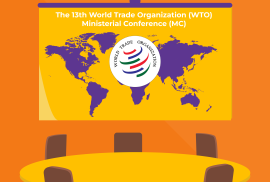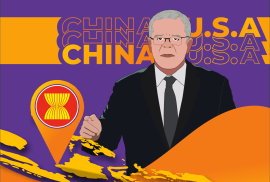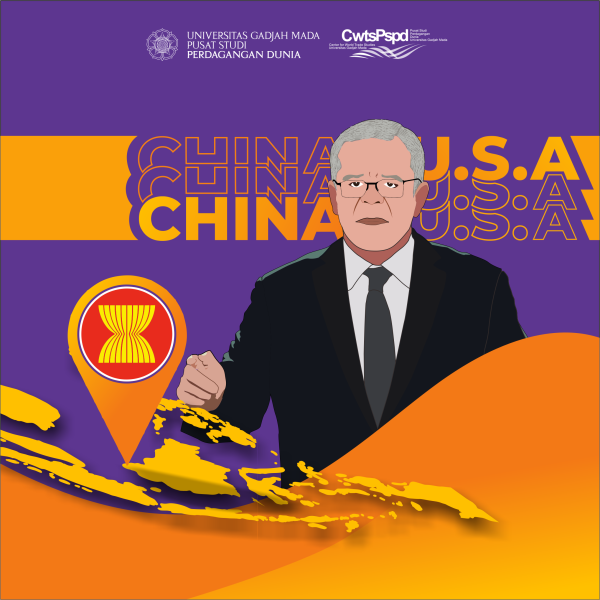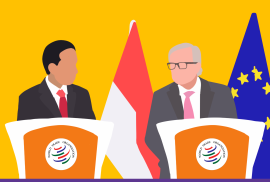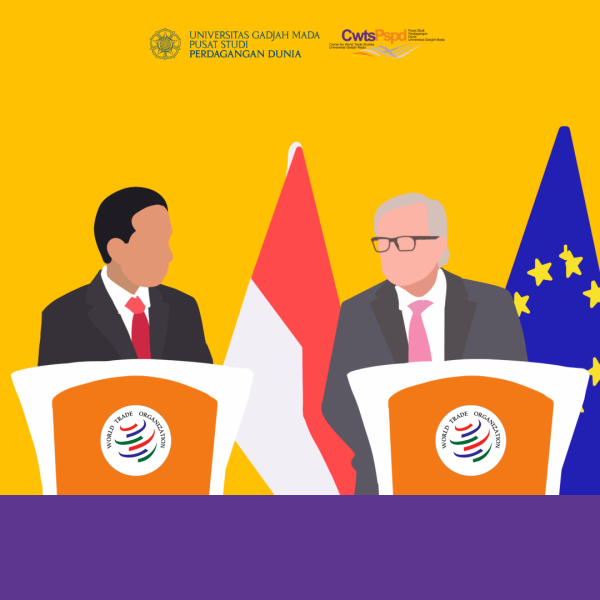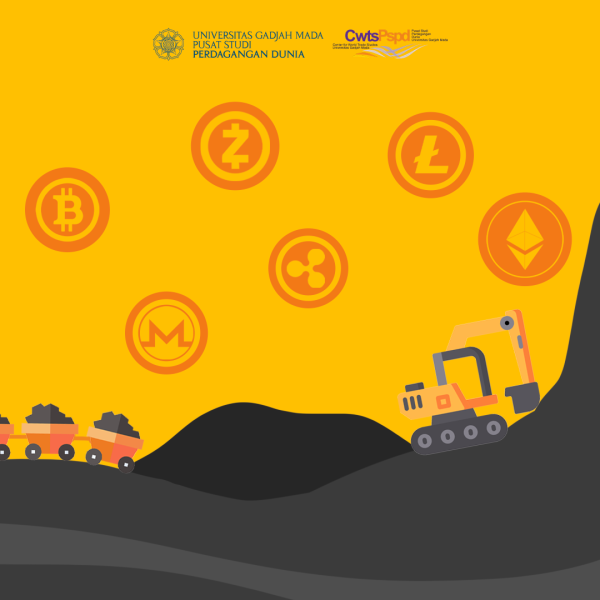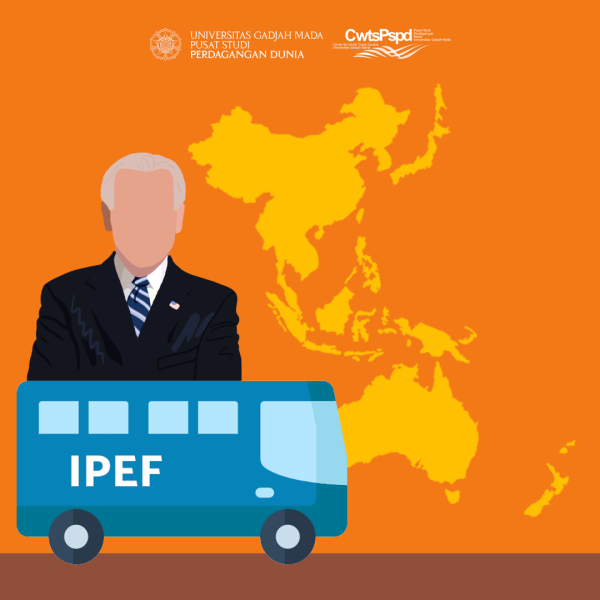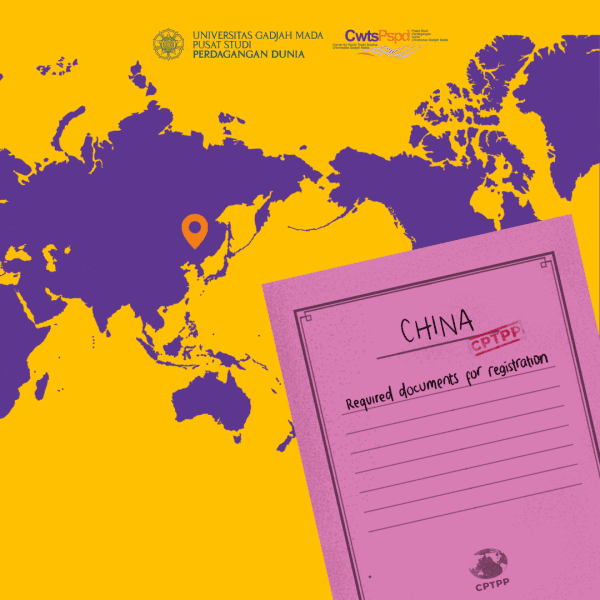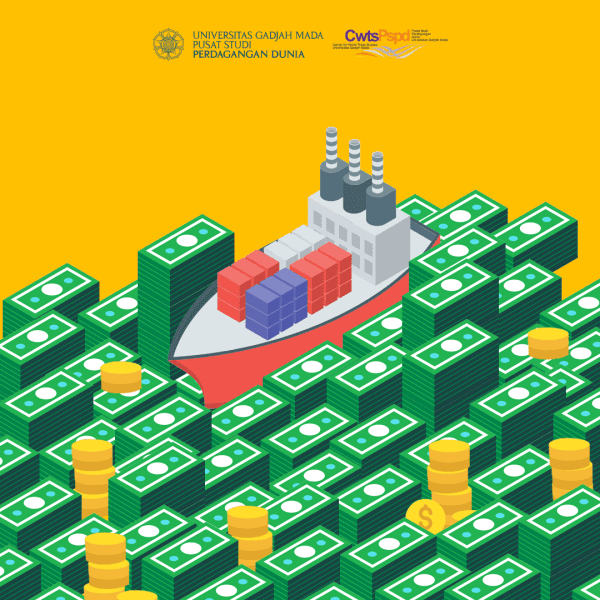Bridging the Divide: Key Agendas for Discussion at 13th WTO Ministerial Conference
BeritaBerita EnMediaNewsNews-NewOp-Ed EnPress Release Saturday, 24 February 2024
Bridging the Divide: Key Agendas for Discussion at 13th WTO Ministerial Conference

Writer:
Theofillius Baratova A. K., S.Sos.
Head of Policy Partnership, Center for World Trade Studies Universitas Gadjah Mada.

Writer:
Lukas Andri Surya Singarimbun, S.I.P
Manager of Research Outputs, Center for World Trade Studies Universitas Gadjah Mada.

Editor:
Maria Angela Koes Sarwendah, S.I.P.
Head of Research and Publication Division, Center for World Trade Studies Universitas Gadjah Mada.
The 13th World Trade Organization (WTO) Ministerial Conference (MC) will take place on 26th until 29th February 2024. Bringing several issues regarding the international trade regime, this edition of MC will discuss several pivotal issues, such as: 1) WTO Reform; 2) Agreement on Fisheries Subsidies, 3) Extension of E-commerce, 4) TRIPS Waiver, 5) Agriculture negotiations, and 6) Development related issues. This year’s conference will be held in Abu Dhabi, UAE, amidst the global uncertainty of international peace, fragmentation of the global economy, and deteriorating environmental sustainability. With the existence of these challenging issues, several argue that the conference will produce few progressive results and will likely fail to deliver much.
Despite skeptical views by some, significant progress on important issues might still be produced from WTO MC13. For instance, the most pivotal issue of WTO reform regarding the dispute settlement mechanism. The US has blocked all new appointments to the Appellate Body as the terms of judges since 2017, whereas all seven seats of the body have been vacant since December 2020 and subsequently disabled the WTO enforcement. In consequence, the incapacitated Appellate Body leads to blockade by countries ruled against with filing an appeal known as “appealing into the void”. Failure to conclude progressive advancement regarding this issue will proliferate current practices of weaponization of trade by countries.
Another important issue is on the E-commerce topics. In Abu Dhabi, the WTO members will convene to address two pivotal issues: the continuation of discussions under the Work Programme on e-commerce and the fate of the Moratorium on Customs Duties on Electronic Transmissions, both initiated in 1998. While the Work Programme appears to proceed smoothly, the Moratorium on Customs Duties on Electronic Transmissions faces significant contention. The Moratorium, which has historically exempted digital products from tariffs, faces polarization. Some member states advocate for its permanence while others, notably developing countries such as India, South Africa, and Indonesia, argue that it deprives them of vital revenue, particularly as digitalization advances and new technologies emerge. Amidst these debates, the uncertain future of the Moratorium underscores the intricate dynamics of negotiations within the WTO and highlights the challenges of reconciling diverse perspectives on digital trade and revenue generation.
Supported by a considerable group of WTO members and business organizations, the Moratorium's extension faces uncertainty as wavering commitments, notably from the US, and concerns about the evolving digital trade landscape come into play. Despite the Moratorium's historical extension every two years by consensus, the prospect of its continuity appears increasingly vague, especially considering the complexities of revenue collection in the digital age and the rising importance of e-commerce in global trade. WTO MC13 should pave the way towards consensus between facilitating digital trade and addressing the developmental needs and revenue concerns of WTO member states to navigate the future of global trade effectively.
For Indonesia, this MC is also important to address several issues that are closely related to national interest—one of them being the Agreement on Fisheries Subsidies. As a maritime country, Indonesia has an urgent interest in ensuring the economic activities in marine ecosystems are not hampering the sustainability of oceans. Failure to ensure the sustainability of marine resources will not only damage the environment, but also will negatively affect Indonesia’s coastal communities. There are around 120 million people or 50% of Indonesia's population who live in coastal areas, depending on the sea to make their ends meet. However, coastal communities in Indonesia face several challenges that impact their socio-economic development, environmental sustainability, and quality of life. These vulnerabilities are identified as poverty, education, environmental degradation, unsustainable development, and unconnected supply chains.
Regarding this issue, through the Circular Economy Forum 2023 (CEF 2023), Center for World Trade Studies Universitas Gadjah Mada (CWTS UGM) has explored problems that occur at the grassroots level regarding the paradox between Indonesia’s abundant coastal communities and the fact that many of the communities remain under-developed. Furthermore, several stakeholders exhibit an ambiguous understanding of the latent capabilities inherent in an archipelagic nation. Consequently, the current state of the Indonesian fisheries sector still cannot solve many societal uncertainties.
Given the urgency of this challenge, CWTS UGM collaborated with academics, local communities, and the business sector in formulating the “Podocarpus Initiative” in CEF 2023 as a recommendation for the Indonesian government to adopt WTO’s Agreement on Fisheries Subsidies. This initiative emphasizes the establishment of a multi-stakeholder policy forum aimed at promoting the blue economy in domestic policy formulation, with transparent and optimal law enforcement in marine resource extraction sectors to encourage sustainable trade, environmental conservation, business mentoring, and educational curriculum development. The Agreement on Fisheries Subsidies is deemed important due to its key provisions aimed at ensuring the sustainability of the ocean by curtailing harmful subsidies, which are in line with Sustainable Development Goals (SDG) 14. Moreover, the enactment of this agreement holds the opportunities to develop Indonesia's coastal community potential. Giving certainties to small-scale fishers, which become the most vulnerable ocean community in the barn of prosperity, should be navigated by implementing the Agreement and the Initiative.
Another issue that is crucial to Indonesia is agriculture and Special & Differential Treatment (S&DT). Speaking at the Doha Trade Negotiations Committee (TNC), Indonesia’s Ambassador for WTO HE. Dandy Iswara reiterated the urgent need to ensure that the demands of developing countries can be met through fair S&DT, including S&DT on food security and rural development. In this regard, Indonesia emphasized that “resolving our homework on PSH (Public Stockholding) and SSM (Special Safeguard Mechanism), as well as achieving a balanced and fair outcome in domestic support and cotton (which is a pivotal commodity to Indonesia), should continue to remain high on our agenda.”
In conclusion, the WTO MC13 outcome is vital to not only reform the WTO as an institution that ensures the effectiveness of international trade, but also to respond to climate change and agricultural issues. Despite skeptical views by some, WTO Deputy Director-General Angela Ellard mentioned that WTO’s current significant progress of informal technical negotiations among its state members are heading towards the goal agreed at MC12 and will be well-functioning in 2024. Every member of the WTO should work expeditiously to reform the WTO dispute mechanism and rebuild trust towards the institution. Moreover, critical issues for Indonesia sh be properly addressed during the MC 13, especially regarding Agreement on Fisheries Subsidies and Special and Differential Treatment on Agriculture.

